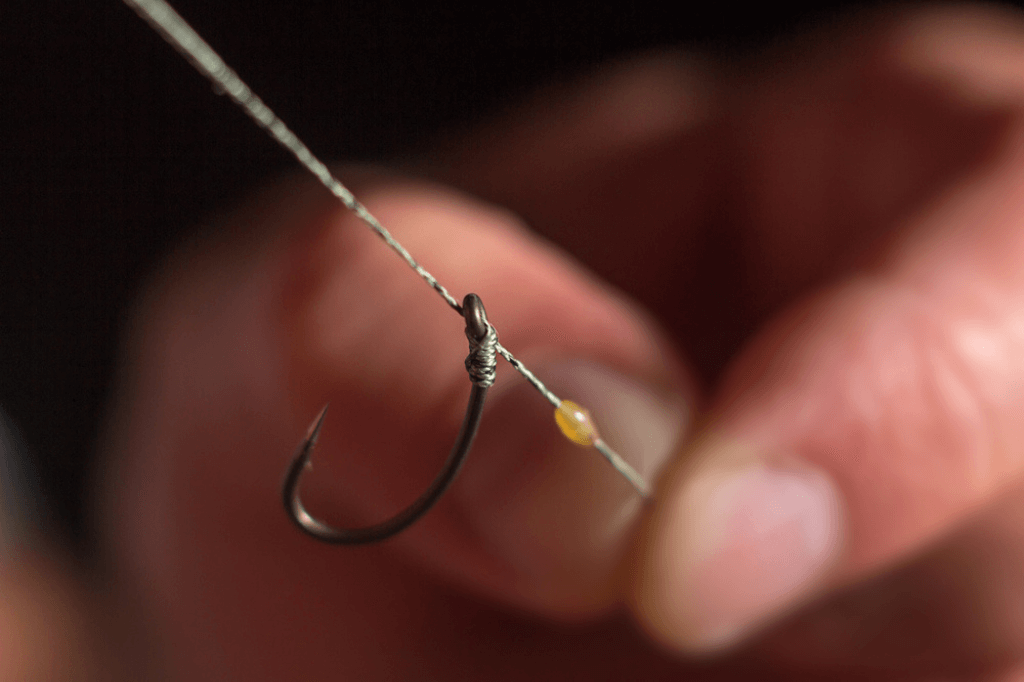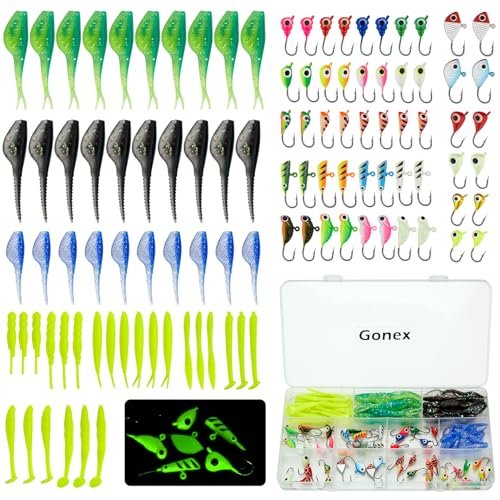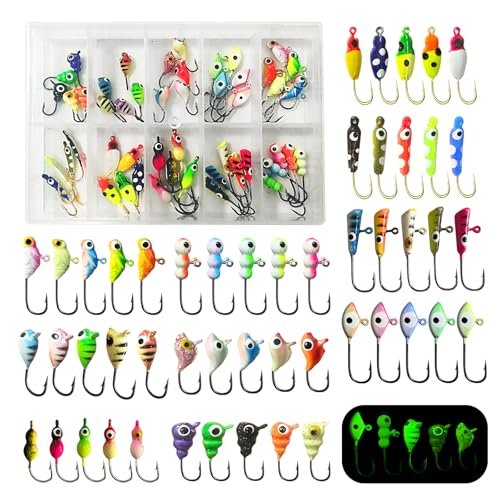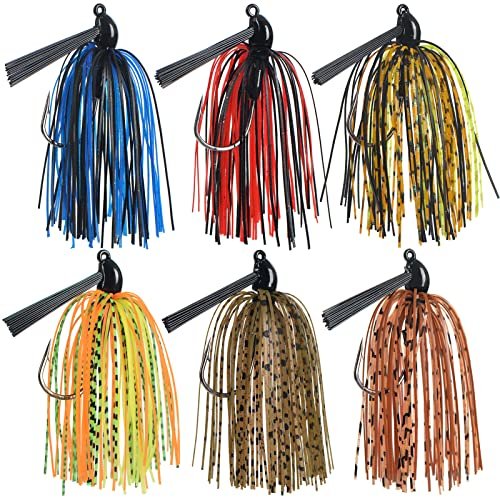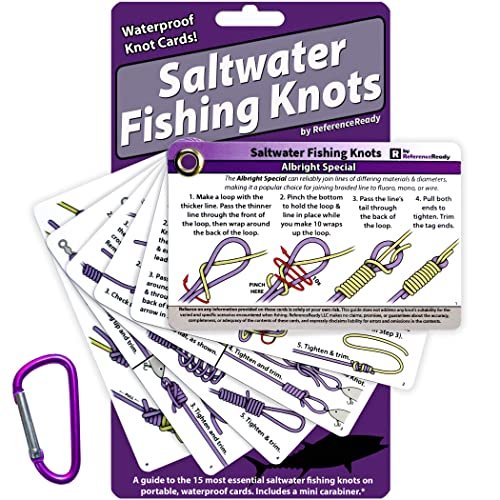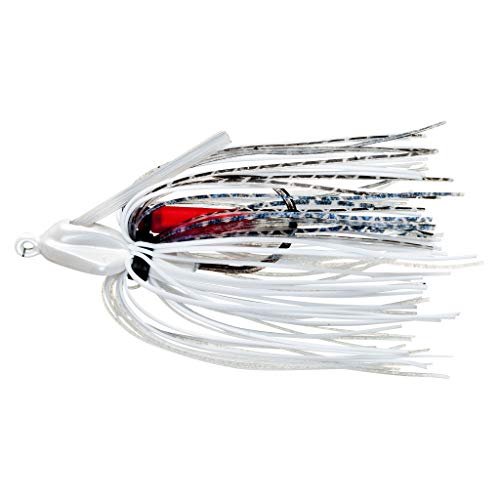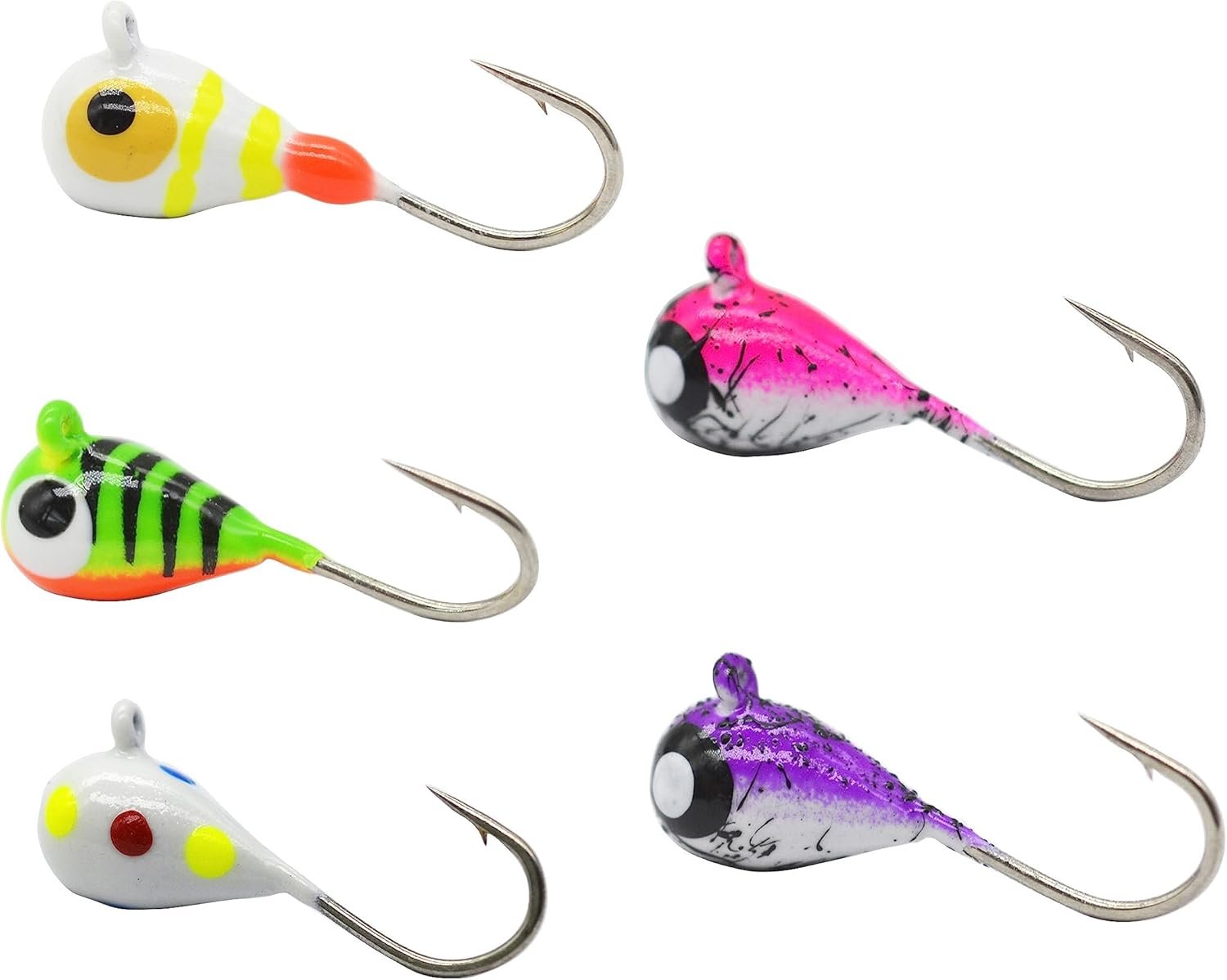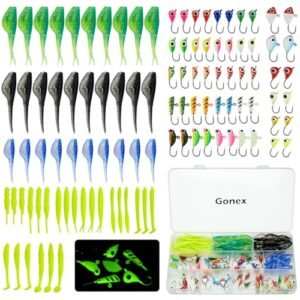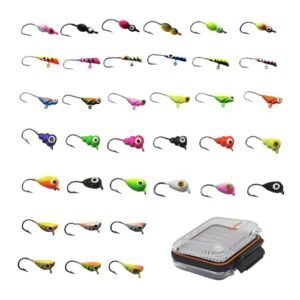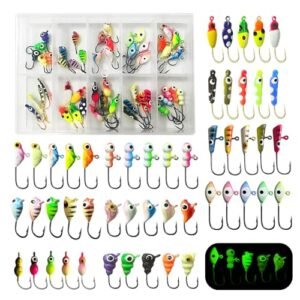Embarking on the quintessential journey of fishing begins with mastering the art of hook tying—a skill pivotal for anglers of all levels. Tying a hook is the fundamental step that connects the angler to the fish, making it a critical component of successful fishing.
It’s a simple yet vital process that ensures the strength of the bond between the line and the hook, which could mean the difference between a great catch and a missed opportunity. As beginners and seasoned fishers alike know, the right knot can make all the difference. Perfecting this skill not only enhances the fishing experience but also builds a solid foundation for engaging with the sport. This introduction to tying a fishing hook will guide you through the essentials, ensuring that your line is well-prepared to land your next big catch.
Introduction To Fishing Hooks
Fishing hooks are essential tools for catching fish. They come in various shapes and sizes. Each type serves a different purpose. Knowing how to tie fishing hook properly can make a big difference in your fishing success.
The Importance Of A Proper Knot
Using the right knot is crucial. A good knot ensures your hook stays attached to the line. It helps you catch more fish. There are many knots, but some are better for certain hooks.
- Improves hook’s grip: Prevents losing the fish.
- Increases strength: Ensures the line holds well under pressure.
- Enhances performance: Makes fishing more efficient.
Types Of Fishing Hooks
Different fish require different hooks. Choose according to the fish you want to catch.
| Type | Use |
|---|---|
| Single Hooks | Good for individual baits. |
| Double Hooks | Great for larger baits. |
| Circle Hooks | Reduce fish injury. Good for catch and release. |
| Treble Hooks | Used on lures. Catch more fish. |
Each hook type matches a fishing style. Pick the right one for success.
Essential Knot-tying Tools
When setting up for a successful fishing trip, tying a secure hook is vital. To achieve this, certain tools are essential. These tools make the process easier, more efficient, and can help create the perfect knot every time. Let’s explore these knot-tying aids.
Fishing Pliers And Scissors
Fishing pliers are a must-have for any angler. These versatile tools not only assist in removing hooks but are also perfect for tightening knots. Their long-nose design allows for easy manipulation of fishing line.
- Non-slip handles: Ensure a firm grip even when wet.
- Durable construction: Stainless steel or aluminium offers longevity.
- Built-in cutters: Snip lines with ease, no need for extra tools.
Scissors should be sharp and small. They must handle braided and monofilament lines. A quality pair of scissors provides clean cuts for a neat knot.
- Compact size: Fits easily in tackle boxes or pockets.
- Sharp blades: Cut lines smoothly without fraying.
Knot Tying Gadgets
Knot tying gadgets simplify the process, especially for beginners. These tools guide the line to ensure a perfect knot. They are great for cold weather or when hands are shaky.
| Tool Type | Benefits |
|---|---|
| Knot Tying Tools |
|
| Line Clippers |
|
Look for gadgets with clear instructions. Practice with them before heading out. They should be lightweight and easily attach to your fishing vest.
Basic Knots For Beginners
Starting your fishing journey means mastering the basics. One essential skill is tying hooks. Let’s focus on two simple, yet strong knots. These knots keep your hook secured to the line. They are easy to learn and effective for beginners.
The Improved Clinch Knot
The Improved Clinch Knot is a popular choice for anglers. It’s strong and works well with various fishing lines. Follow these steps:
- Pass the line through the hook’s eye.
- Wrap the end around the standing line, five to seven times.
- Take the end through the small loop near the hook’s eye.
- Push it through the big loop just formed.
- Wet the line and pull both ends to tighten the knot.
- Trim any excess line from the end.
Practice this knot until it’s second nature. It ensures your hook stays put, even when fighting big fish.
The Palomar Knot
The Palomar Knot is another beginner-friendly option. It’s perfect for securing a hook, especially with braided lines. Here’s how to tie it:
- Double the line to make a loop and pass it through the hook’s eye.
- Tie a simple overhand knot with the loop, above the hook.
- Open the loop and slip it over the hook.
- Wet the knot, pull the line to tighten around the eye.
The Palomar Knot is reliable and very easy to tie. It’s a strong connection that rarely slips or breaks.
These knots provide a solid start for any novice angler. With practice, they become quick and easy to tie. Remember, a well-tied knot is the link between you and your next big catch.
Advanced Knot Techniques
Mastering advanced knot techniques elevates your fishing game. It’s not just about tying a hook; it’s about securing your catch with confidence. Let’s dive into two sophisticated techniques that every angler should know.
The Turle Knot
The Turle Knot is perfect for thin lines and small hooks. It’s a go-to for fly fishing. Here’s how you tie it:
- Thread the line through the hook’s eye.
- Form a simple loop above the hook.
- Pass the hook through this loop twice.
- Pull both ends to tighten the knot around the eye.
- Trim the excess line.
This knot secures the hook tightly without slipping.
The Blood Knot
The Blood Knot excels at joining two lines of similar thickness. Ideal for adding length or changing line types. Follow these steps:
- Overlap the ends of the lines to be joined.
- Wrap one end around the other five times.
- Repeat with the other end, wrapping in the opposite direction.
- Bring both ends to the middle and moisten the knot.
- Pull the main lines in opposite directions to tighten.
- Trim the excess from the ends.
This technique creates a strong and smooth connection between two lines.
Knots For Various Fishing Conditions
Mastering the art of tying fishing hooks is key for every angler. Different conditions call for specific knots. The right knot can mean the difference between a big catch and a lost fish.
Saltwater Fishing Knots
Saltwater presents unique challenges. Strong currents and big fish demand robust knots. Use knots that withstand harsh saltwater conditions.
- Palomar Knot – Ideal for lures and hooks, offers high strength.
- Improved Clinch Knot – Popular for its reliability, perfect for smaller fish.
- Uni Knot – Versatile, easily adjustable, and strong.
Freshwater Fishing Knots
Freshwater fishing requires precision. Subtle currents and diverse fish species mean using knots that allow for finesse and sensitivity.
- Loop Knot – Allows lures to move naturally, attracting fish.
- Trilene Knot – Strong and reliable for securing hooks to fishing line.
- Double Surgeon’s Loop – Creates a strong loop at the line’s end.
Tips For Tying Stronger Knots
Mastering the art of tying fishing hooks can mean the difference between a great catch and a lost fish. Strong knots secure the hook to the line, ensuring that when a fish bites, it stays hooked. Here are essential tips to tie stronger knots that won’t give in during the critical moment of a catch.
Moistening The Line
Before tightening a knot, always moisten the line. This reduces friction and allows the knot to tighten smoothly. Use water or saliva to wet the line. This simple step can prevent the line from weakening due to heat caused by friction.
Practicing Consistent Tension
Applying even tension is key when forming a knot. Pull each part of the knot slowly and steadily. This helps to form a compact and reliable structure. A loose knot can unravel, while too much force can damage the line.
- Choose the right knot for your fishing needs. There are many types, each with specific benefits.
- Trim the excess line close to the knot to avoid any unnecessary tangles or snags.
- Test the knot by gently pulling on it to ensure it holds firm under pressure.
Troubleshooting Common Knot Issues
Even the most skilled anglers face knot problems. Proper knot tying is crucial for a successful catch. This section explores common issues and how to fix them.
Slippage And Weakness
Knots that slip or break can ruin a fishing trip. A few tips can prevent these problems:
- Wet your line before tightening. This reduces friction and heat that can weaken the knot.
- Practice makes perfect. Regularly practice tying knots to ensure they hold.
- Use a backing knot if using braided lines. This stops the line from slipping on the reel.
Choose the right knot for the situation. The Improved Clinch Knot is a popular choice for its strength and reliability.
Dealing With Tangled Lines
Tangles can be a nightmare. Follow these steps to keep your line clear:
- Pull slowly to identify the loops causing the tangle.
- Use a needle or pin to gently work out knots.
- Avoid haste. Rushing can tighten knots and worsen tangles.
Regular line maintenance, like keeping it clean and using line conditioner, prevents tangles.
Maintaining Your Fishing Line And Hooks
Maintaining your fishing line and hooks is key to a successful fishing trip. Proper care ensures they last longer and perform better. Let’s dive into how to keep them in top condition.
Regular Inspection And Replacement
Regular checks are essential. Look for signs of wear or damage on your line and hooks. This means checking for any frays in the line or dullness in the hooks. A damaged line or hook can lead to losing a big catch.
Follow these simple steps:
- Unwind your line and check thoroughly.
- If you find frays or knots, consider replacing the line.
- Examine hooks for rust or dullness. Sharpen or replace as needed.
Proper Storage Solutions
How you store your line and hooks affects their lifespan. Moisture and tangles are big enemies. Here are tips for proper storage:
- Keep them dry: Always dry your gear before storing.
- Use line spools: This helps prevent tangles and kinks in your line.
- Separate hooks: Store hooks separately in a dry, organized container.
Consider using a tackle box with compartments. It keeps everything organized and easily accessible.
Conclusion: Mastering The Art Of Knot Tying
Mastering knot tying is a skill that elevates your fishing game. It ensures your hook stays secure, no matter the challenge. With practice, patience, and the right techniques, you can become an expert in no time.
The Journey To Knot Expertise
Embarking on the knot-tying journey is both exciting and rewarding. Begin with simple knots. Practice them until they become second nature. Move on to more complex knots as you grow more confident. Remember, every angler starts as a beginner. Dedication and consistent practice are key to becoming proficient.
- Start simple: Learn the basic knots first.
- Practice regularly: Consistency leads to mastery.
- Progress gradually: Build your skills with more complex knots over time.
Resources For Continued Learning
There are numerous resources available to help you on your knot-tying journey. Books, videos, and online tutorials can guide you through the process. Join fishing communities or forums. They can offer support and tips. Keep a pocket-sized knot guide handy for quick reference on the go.
| Resource Type | Examples |
|---|---|
| Books | The Little Book of Incredibly Useful Knots |
| Videos | YouTube tutorials |
| Online Tutorials | AnimatedKnots.com |
| Communities | Reddit’s r/fishing |
Stay curious and always look for new techniques. Your skills will grow, and so will your catches. Good luck, and tight lines!
Frequently Asked Questions
How To Tie A Fishing Hook For Beginners?
Begin by threading the line through the hook eye. Twist the line five to seven times. Loop the line back through the formed hole. Finally, pull tight to secure the knot. Trim excess line from the end.
What Is The Best Fishing Knot To Tie?
The best fishing knot for versatility and strength is the Palomar Knot. It’s easy to tie, works well with various lines, and secures hooks, swivels, and lures effectively. Ideal for both beginners and experienced anglers, the Palomar Knot ensures a reliable connection for a successful fishing experience.
How To Tie A Hook And Sinker?
Start by threading the line through the hook eye and tie a clinch knot. Attach the sinker above the hook using a simple overhand knot. Trim any excess line.
How To Rig A Fishing Line For Beginners?
Thread the line through the rod’s guides. Tie on a swivel, and attach a leader. Add a hook at the end. Secure a sinker above the swivel for weight. Adjust your float for depth.
Conclusion: How to Tie Fishing Hook
Mastering the art of tying a fishing hook is essential for any angler. This guide has equipped you with the skills needed for a successful catch. Remember, practice makes perfect. Keep refining your technique, and soon, you’ll tie hooks like a pro.
Happy fishing, and may your lines always be tight!
